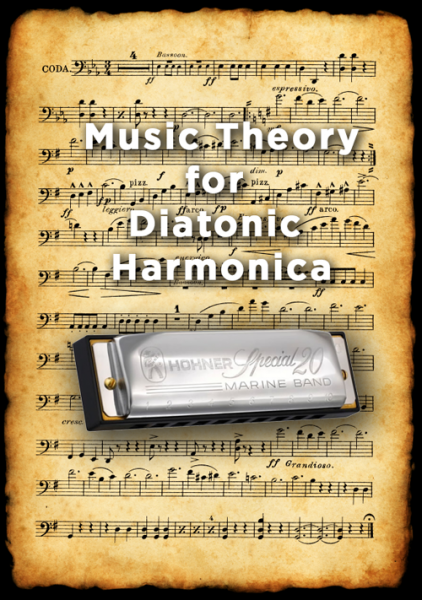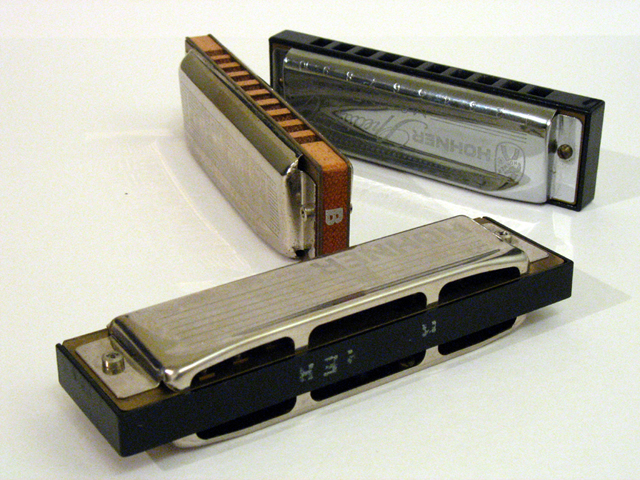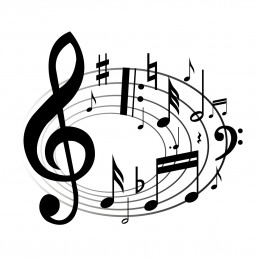The Stranger's Hand
I usually encourage everyone to buy CDs, but I just found a link to this CD on youtube. It's a one-time-only recording I made in 1999 with 3 great musicians. We had never played together before, spent 9 days recording this CD at Steve Smith's home studio in the Bay Area. It's one of my favorite things that I've ever recorded. All the music is original, including a few free improvs. Steve, violinist Jerry Goodman and I played together a few times after this, but not with bassist Oteil Burbridge, I'm sorry to say. So give it a listen if you have some time on your hands. If you make it all the way to the end, you will hear the fastest harmonica solo that I've ever recorded starting around 4 minutes into the last tune. On this link this part of the tune starts around 48:20.
Music Theory for Diatonic Harmonica: Part 3

The majority of Americans who play diatonic harmonica are primarily Blues players. This is because the instrument naturally plays Blues chords and licks if you play in the Mixolydian Mode, G on a C harp, also called Cross Harp and Second Position. (Ah, terminology.) This approach was discovered by American Blues musicians sometime in the 1920s or 30s - nobody really knows when. It is an incredible coincidence that the Germans would unknowingly design the world’s greatest Blues instrument, but it’s the truth. It’s just as natural to play a simple Blues chordal vamp on the diatonic harmonica as it is to play a German Folk tune.
Diatonic Harmonica and Music Theory
 The diatonic harmonica poses some unique challenges to someone starting to play it. Unlike most other Western instruments, it is not designed to play all the notes. Most diatonic harmonicas are set up using what is called the Richter tuning system. Named for a 19th century German harmonica maker, this system was designed to make the instrument serve several functions.
The diatonic harmonica poses some unique challenges to someone starting to play it. Unlike most other Western instruments, it is not designed to play all the notes. Most diatonic harmonicas are set up using what is called the Richter tuning system. Named for a 19th century German harmonica maker, this system was designed to make the instrument serve several functions.
If you sweep over the holes blowing each one from 1 to 10 (you can get single notes by using a pucker embouchure or tongue blocking, a more complicated technique), you will get a 3 octave major arpeggio. On a harmonica in the key of C, this starts at middle C, has the notes C, E, and G, and actually has the same range as a flute.
 The diatonic harmonica poses some unique challenges to someone starting to play it. Unlike most other Western instruments, it is not designed to play all the notes. Most diatonic harmonicas are set up using what is called the Richter tuning system. Named for a 19th century German harmonica maker, this system was designed to make the instrument serve several functions.
The diatonic harmonica poses some unique challenges to someone starting to play it. Unlike most other Western instruments, it is not designed to play all the notes. Most diatonic harmonicas are set up using what is called the Richter tuning system. Named for a 19th century German harmonica maker, this system was designed to make the instrument serve several functions.
If you sweep over the holes blowing each one from 1 to 10 (you can get single notes by using a pucker embouchure or tongue blocking, a more complicated technique), you will get a 3 octave major arpeggio. On a harmonica in the key of C, this starts at middle C, has the notes C, E, and G, and actually has the same range as a flute.
Music Theory with Howard Levy: Part 1

Learning music theory will actually help you pick out tunes by ear. I think the most important thing about music theory is teaching someone how to HEAR more accurately. I like to keep the terminology to a minimum and only teach things that are the most useful to what a musician needs to make progress at each step along the way.
The skill of being able to hear what you are listening to accurately is one that few people possess naturally, so it usually needs to be explained and taught. I like to draw a parallel between sight and sound.






